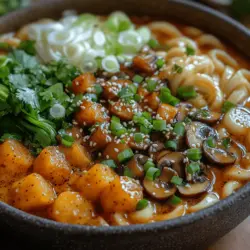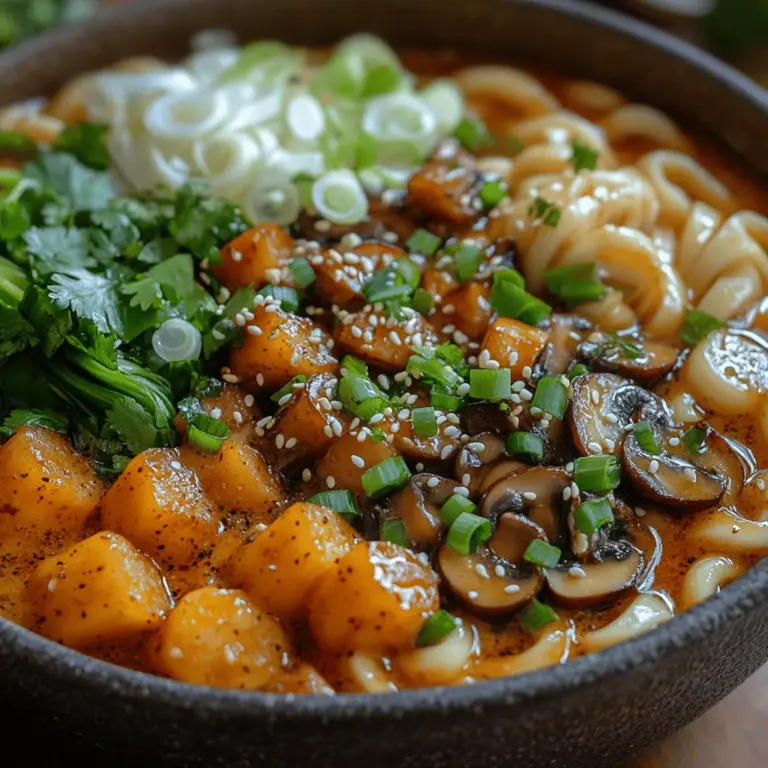Introduction
Welcome to the delightful world of homemade chocolate chip cookies! There’s something truly special about the aroma of freshly baked cookies wafting through your home. These timeless treats have a unique ability to bring comfort and joy, making them the perfect addition to any occasion—whether it’s a casual gathering, a festive celebration, or simply a cozy evening at home.
The allure of chocolate chip cookies lies not only in their delicious taste but also in the nostalgia they evoke. Many of us have fond memories of baking with family, laughter filling the air as we eagerly awaited that first bite. However, to achieve that quintessential cookie experience, it’s essential to start with high-quality ingredients. This article will guide you through every step of creating irresistible chocolate chip cookies, from understanding their history to preparing each ingredient with care.
Prepare to embark on a culinary journey that will culminate in a batch of warm, gooey, and utterly satisfying cookies. We’ll explore the origins of this beloved treat, break down the essential ingredients that contribute to their magic, and provide you with a step-by-step guide to baking the perfect cookie. Let’s get started!
The History of Chocolate Chip Cookies
Every great recipe has a story, and the chocolate chip cookie is no exception. This iconic treat was born in the 1930s thanks to the innovation of Ruth Wakefield, who owned the Toll House Inn in Whitman, Massachusetts. One day, while making a batch of Butter Drop Do cookies, she decided to add chunks of semi-sweet chocolate to the dough, expecting them to melt and create a chocolate-flavored cookie. To her surprise, the chocolate held its shape, resulting in a deliciously chewy treat that would soon become a household name.
Ruth’s recipe was published in a Boston newspaper and quickly gained popularity, leading to the establishment of the Toll House brand, which still exists today. The original recipe became a staple in American kitchens, and its widespread appeal contributed to the chocolate chip cookie’s rise as a cultural icon. Over the decades, the cookie has evolved, inspiring countless variations, from chewy to crispy, and incorporating ingredients like nuts, oatmeal, and even unique flavorings.
The chocolate chip cookie has transcended borders, finding a place in various cultural contexts around the world. Each region has embraced the classic cookie, adapting it to local tastes and ingredients. Today, it remains a beloved dessert, celebrated for its versatility and the joy it brings to bakers and cookie lovers alike.
Ingredients: The Key to Perfect Cookies
The heart of any great cookie lies in its ingredients. To create the perfect batch of chocolate chip cookies, it’s essential to understand the role of each component and choose high-quality options that will elevate your baking.
Flour: Choosing the Right Type for Texture
Flour is the foundation of your cookie dough and plays a critical role in determining the texture of your cookies. For chocolate chip cookies, all-purpose flour is the most commonly used type. It has a balanced protein content that provides the right structure without making the cookies too tough. If you’re looking for a softer, more tender cookie, you might consider using cake flour, which has a lower protein content.
Sugars: The Role of Granulated and Brown Sugar
Sugar is vital for adding sweetness and helping your cookies achieve that perfect chewiness. Most recipes call for a combination of granulated sugar and brown sugar. Granulated sugar contributes to the crispness of the cookie, while brown sugar, which contains molasses, adds moisture and a rich flavor. The interplay between these sugars creates a delightful contrast in texture and taste, resulting in a cookie that is both chewy and slightly crispy around the edges.
Butter: Importance of Temperature and Quality
Butter is another key player in the cookie-making process. It adds richness and flavor, while also affecting the texture of your cookies. For the best results, use unsalted butter that is at room temperature. This allows for better creaming with sugar, resulting in a lighter and fluffier dough. The quality of the butter also matters; opt for higher-fat butter for a richer flavor.
Chocolate: Types of Chocolate Chips and Their Flavor Profiles
When it comes to chocolate, the type you choose can dramatically affect the flavor of your cookies. Semi-sweet chocolate chips are the classic choice, offering a balanced sweetness that complements the cookie dough. However, feel free to experiment with other types, such as dark chocolate for a richer taste or milk chocolate for a sweeter flavor. You can even incorporate chunks of chocolate for a more rustic appearance and varied texture.
Eggs: The Binding Agent and Its Impact on Texture
Eggs are crucial for binding the ingredients together and providing moisture. They also contribute to the cookie’s structure and richness. Most recipes call for large eggs, which should be at room temperature for even mixing. If you’re aiming for a chewier cookie, consider using just the egg yolks, as this will add fat and moisture to the dough.
Baking Soda vs. Baking Powder: Understanding Leavening Agents
The leavening agents in your cookie dough will determine how much your cookies rise during baking. Baking soda is the most commonly used leavening agent in chocolate chip cookies. It reacts with the acidity in brown sugar, creating carbon dioxide that helps the cookies spread and rise. Baking powder can also be used, but it is typically reserved for recipes that require additional leavening. Understanding the difference between these two agents is essential for achieving the desired texture in your cookies.
Salt: Enhancing Flavor and Balancing Sweetness
Salt is a key ingredient in enhancing the overall flavor of your cookies. It balances the sweetness of the sugars and brings out the richness of the butter and chocolate. A pinch of salt can elevate your cookies from good to extraordinary. Be sure to use fine sea salt or kosher salt for accurate measurement and even distribution throughout the dough.
Optional Ingredients for Customization: Nuts, Oats, and Spices
While the classic chocolate chip cookie recipe is beloved as is, there’s plenty of room for customization. Consider adding chopped nuts, such as walnuts or pecans, for added crunch and flavor. If you enjoy a heartier texture, oats can be incorporated into the dough. Additionally, spices like cinnamon or nutmeg can enhance the flavor profile and add an unexpected twist. The possibilities are endless, allowing you to create a cookie that perfectly suits your taste.
Preparation: Step-by-Step Guide to Baking
Now that we have a grasp on the ingredients, it’s time to dive into the preparation process. Baking cookies can be a fun and rewarding experience, but it’s essential to have everything organized before you begin.
Prepping Your Kitchen: Tools and Equipment Needed
Before you start baking, make sure you have all the necessary tools and equipment on hand. Here’s a list of what you will need:
– Mixing bowls: A large bowl for mixing wet ingredients and a separate bowl for dry ingredients.
– Measuring cups and spoons: Accurate measurements are crucial for successful baking.
– A mixer: An electric mixer or a sturdy whisk will help you cream the butter and sugar effectively.
– Baking sheets: Choose quality baking sheets lined with parchment paper for easy cleanup and even baking.
– Cooling racks: These allow your cookies to cool properly, preventing sogginess.
Measuring Ingredients Accurately for Best Results
Accurate measurements are vital to achieving the perfect cookie. Use the spoon-and-level method for measuring flour: spoon the flour into your measuring cup and level it off with a knife. Avoid scooping directly from the bag, as this can lead to packed flour and result in dry cookies. For sugars and other dry ingredients, ensure they are leveled off as well for consistency.
Mixing Techniques: Creaming Butter and Sugar
One of the most critical steps in cookie preparation is the creaming process. Begin by placing your room-temperature butter in a mixing bowl and adding both granulated and brown sugars. Using an electric mixer, cream the butter and sugar together on medium speed until the mixture is light and fluffy. This process incorporates air into the dough, leading to a lighter texture in the finished cookies.
Adding Dry Ingredients: Best Practices for Mixing
Once your wet ingredients are well combined, it’s time to incorporate the dry ingredients. In a separate bowl, whisk together your flour, baking soda, and salt. Gradually add the dry mixture to the wet ingredients, mixing on low speed to avoid overworking the dough. Overmixing can lead to tough cookies, so mix just until the flour is incorporated. Finally, fold in the chocolate chips, ensuring they are evenly distributed throughout the dough.
Now that you have a solid understanding of the history, ingredients, and preparation techniques for making chocolate chip cookies, you’re well on your way to baking a batch that will delight friends and family alike. Stay tuned for the next part of this article, where we will delve into the baking process and provide tips for achieving cookie perfection!
{{image_2}}
The Importance of Chilling Dough: Impact on Flavor and Texture
Chilling the dough is a crucial step in the cookie-making process that should never be overlooked. When you chill your dough, you’re allowing the flavors to meld and develop more complexity. This resting period also affects the texture of the cookies. As the dough chills, the fats solidify, which helps to prevent the cookies from spreading too much during baking. This results in a thicker, chewier cookie that has a delightful bite. Furthermore, chilled dough can lead to a more appealing cookie color, enhancing the visual appeal of your final product. For best results, aim to chill your dough for at least 30 minutes, although longer chilling times can further deepen the flavor.
Portioning the Dough: Methods for Uniform Cookies
Achieving uniform cookies not only makes for a more appealing presentation but also ensures even baking. There are several effective methods for portioning your dough.
1. Scoop Method: Using a standard cookie scoop, you can easily portion out equal amounts of dough. This method is quick and ensures consistency in size, which is vital for even baking.
2. Scale Method: For the most accurate results, consider weighing your dough. A kitchen scale allows you to portion cookies to the exact same weight, typically around 1.5 ounces for standard cookies.
3. Cutting Method: If you’re making bar cookies or want a unique shape, roll your dough into a log, chill it, and then slice it into uniform pieces.
No matter which method you choose, ensure that your cookies are spaced adequately on the baking sheet to allow for expansion during baking.
Baking: Achieving the Perfect Cookie Texture
Preheating the Oven: Why It Matters
Preheating your oven is one of the most critical steps in ensuring your cookies bake evenly. An adequately preheated oven allows the cookies to start cooking immediately upon entering, setting the structure before they begin to spread. Aim for a consistent temperature, typically around 350°F (175°C) for most cookie recipes, including our Earthy Miso Mushroom Udon cookies.
Choosing the Right Baking Sheet and Parchment Paper
The type of baking sheet you use can significantly impact your cookie’s texture. Opt for light-colored, heavy-gauge baking sheets that ensure even heat distribution. Dark sheets tend to absorb more heat, potentially leading to overbaked bottoms. To prevent sticking and ensure an easy release, line your baking sheets with parchment paper. Not only does this aid in clean-up, but it also helps achieve a nice, uniform bottom crust.
Baking Time and Temperature: Finding the Sweet Spot
The baking time and temperature can vary based on your specific oven and the size of your cookies. As a general guideline, most cookies will require about 10-12 minutes at 350°F. However, keep a watchful eye on your cookies during the last few minutes of baking. For a perfectly baked cookie, look for a slightly golden edge, while the center remains soft. Remember, the cookies will continue to firm up as they cool on the baking sheet.
Signs Your Cookies Are Done: Visual and Tactile Cues
Knowing when your cookies are done can be tricky. Here are some signs to look out for:
– Visual Cues: The edges should be golden brown, while the center might still appear slightly underbaked. This is perfectly normal, as the cookies will continue to cook as they cool.
– Tactile Cues: Gently touch the center of the cookie; it should feel set but still soft to the touch. If it’s too mushy or wet, give it a couple more minutes in the oven.
Cooling the Cookies: Techniques for Optimal Texture
Cooling your cookies properly is just as important as baking them correctly. Immediately transferring cookies to a wire rack helps them cool evenly, preventing soggy bottoms. If you leave them on the baking sheet, they will continue to cook and can become overly firm. Allow them to cool for at least 5 minutes on the sheet before transferring to the rack. This brief cooling period allows them to set up a bit more while still retaining a soft interior.
Serving Suggestions: Enjoying Your Cookies
Classic Pairings: Milk, Coffee, and Ice Cream
What better way to enjoy your Earthy Miso Mushroom Udon cookies than with a classic pairing? A glass of cold milk is a timeless match that complements the sweetness of the cookie while balancing out its savory notes. Coffee lovers can pair these cookies with a rich, dark brew—its bitterness beautifully contrasts the sweetness, enhancing the overall experience. For a more indulgent treat, serving cookies with a scoop of vanilla or green tea ice cream creates a delightful dessert that everyone will love.
Presentation Ideas: How to Serve Cookies at Gatherings
Presentation is key when serving cookies at social gatherings. Consider stacking your cookies on a decorative plate or tiered stand for an eye-catching display. Adding a sprinkle of powdered sugar or drizzling melted chocolate over the top can elevate their visual appeal. For a more rustic look, arrange them in a mason jar or on a wooden board alongside fresh fruit or nuts. This not only looks appealing but also encourages guests to dig in!
Storing Cookies for Freshness: Tips for Longevity
To keep your cookies fresh for as long as possible, store them in an airtight container at room temperature. If you want to extend their life, consider freezing them. Place the cookies in a single layer on a baking sheet until solid, then transfer them to a freezer bag or container. This method prevents them from sticking together and allows you to take out single servings as needed. When you’re ready to enjoy, simply allow them to thaw at room temperature or warm them briefly in the oven for that fresh-baked taste.
Variations on the Classic Recipe
Gluten-Free Chocolate Chip Cookies: Substitutions and Adaptations
For those with gluten sensitivities, making gluten-free cookies is easier than you might think. Substitute all-purpose flour with a gluten-free flour blend, ensuring it contains xanthan gum for structure. Additionally, you can use almond flour or coconut flour as alternatives, but be aware that these may require adjustments in liquid ingredients.
Vegan Chocolate Chip Cookies: Ingredient Swaps for a Plant-Based Version
To make your cookies vegan, swap out butter for coconut oil or a vegan butter substitute. Instead of eggs, use flaxseed meal or chia seeds mixed with water to create an egg substitute. This not only keeps the cookies plant-based but can also enhance their flavor profile, making for a unique twist on the classic.
Creative Mix-Ins: Experimenting with Flavors and Textures
Don’t hesitate to get creative with your cookie recipe! Add in chopped nuts, dried fruits, or even spices like cinnamon or nutmeg to enhance the flavor. For a more indulgent treat, consider mixing in chocolate chunks, caramel bits, or a swirl of nut butter. The possibilities are endless, and experimenting with different flavors can yield delightful surprises.
Seasonal Variations: Pumpkin Spice, Peppermint, and More
Take advantage of seasonal ingredients to create unique cookie variations. For fall, try incorporating pumpkin puree and spices for a pumpkin spice cookie. During the winter months, peppermint extract and crushed candy canes can transform your cookies into a festive treat. These seasonal variations not only cater to holiday celebrations but also keep your cookie game exciting throughout the year.
Troubleshooting Common Issues
Cookies Spreading Too Much: Causes and Solutions
If your cookies spread excessively during baking, the issue may stem from using melted butter instead of softened butter. To prevent this, ensure your butter is at the right temperature—soft and pliable but not greasy. Additionally, chilling the dough before baking can help combat spreading. Lastly, consider adding a bit more flour to the dough if you find it too soft.
Why Cookies Are Too Dry or Too Chewy: Balancing Ingredients
Achieving the perfect cookie texture can be a balancing act. If your cookies turn out too dry, check the flour measurement and avoid overmixing the dough, which can create a tough texture. If the cookies are too chewy, consider reducing the sugar slightly or using a bit more fat to enhance moisture.
Uneven Baking: Tips for Consistent Results
Uneven baking can be frustrating. To achieve consistent results, rotate your baking sheets halfway through the baking time to ensure even heat distribution. Also, make sure your oven temperature is accurate by using an oven thermometer, as fluctuations can lead to uneven baking.
Conclusion
The joy of making and sharing cookies transcends generations, bringing together family and friends around a warm batch of homemade treats. Whether you stick to the classic Earthy Miso Mushroom Udon cookie recipe or venture into variations, the key lies in experimentation and personalizing your approach. Don’t hesitate to make this recipe your own by trying different mix-ins, flavors, or dietary adaptations. The timeless appeal of cookies lies in their versatility and the happiness they bring during moments of sharing. So gather your ingredients, and let the baking begin—your perfect cookie awaits!


